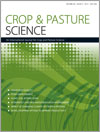CP16224Phosphorus acquisition by three wheat cultivars contrasting in aluminium tolerance growing in an aluminium-rich volcanic soil
Phosphorus (P) deficiency and aluminum (Al) phytotoxicity are major limitations for crop yield in acid soils. The aim of this work was to study Al–P interactions on wheat genotypes of contrasting Al tolerance when grown in a volcanic soil with high Al saturation and low pH. The Al-tolerant genotypes were more effective at P acquisition from soil as well as from P fertiliser added, suggesting that plant traits such as Al tolerance, P efficiency, and AM colonisation potential co-operate in overcoming adverse acid soil conditions.




